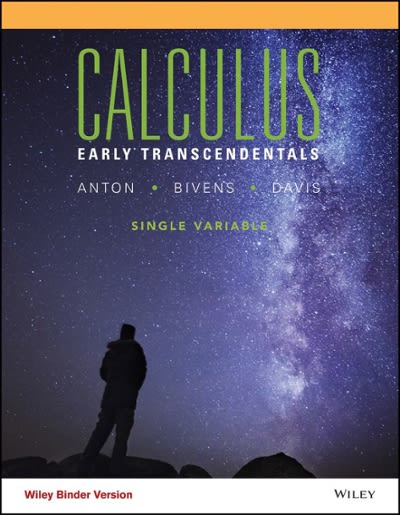Question
7. An instructor wants to claim for students p 0 % of my students would take a class with me again. On the site www.ratemyprofessors.com
7. An instructor wants to claim for students "p0% of my students would take a class with me again". On the site www.ratemyprofessors.com Links to an external site.he has found that only 47.4% would take a class with him again (27 out of 57 ratings).
Of course, he does not want to announce that most students said "no", but he does not want to lie also.
He has decided to make a claim that would not be rejected at a 5% significance level if this sample data were used.
What is the best claim which he can make?
Hypotheses: H0: p = p0% Ha: p < p0%
Answer parts (a) through (c)
7(a). Test the claims for p0 = 58%
H0: p = 58% Ha: p < 58%
p^ = 27/57 0.474
Calculate:
-Standard error, p^: (Round to 3 decimal places)
-Test statistic: (Round to 2 decimal places)
-P-value: (Round to 3 decimal places)
-Conclusion (enter A or B):
A. Reject H0. At the 5% level of significance the data provide sufficient evidence that less than 58% of students would take a class with this instructor again.
B. Fail to reject H0. At the 5% level of significance the data do not provide sufficient evidence that less than 58% of students would take a class with this instructor again.
7(b). Test the claims for p0 = 59%
H0: p = 59% Ha: p < 59%
p^ = 27/57 0.474
Calculate:
-Standard error, p^: (Round to 3 decimal places)
-Test statistic: (Round to 2 decimal places)
-P-value: (Round to 3 decimal places)
-Conclusion (is it A or B):
A. Reject H0. At the 5% level of significance the data provide sufficient evidence that less than 59% of students would take a class with this instructor again.
B. Fail to reject H0. At the 5% level of significance the data do not provide sufficient evidence that less than 59% of students would take a class with this instructor again.
7(c). The best claim that this instructor can make: 58% of students would take a class with me again.
(Remember: just 47% of students answered "yes")
However, can we trust the conclusions of 7(a) and 7(b)? If not, then why?
Could there be any issues with data?
Step by Step Solution
There are 3 Steps involved in it
Step: 1

Get Instant Access to Expert-Tailored Solutions
See step-by-step solutions with expert insights and AI powered tools for academic success
Step: 2

Step: 3

Ace Your Homework with AI
Get the answers you need in no time with our AI-driven, step-by-step assistance
Get Started


